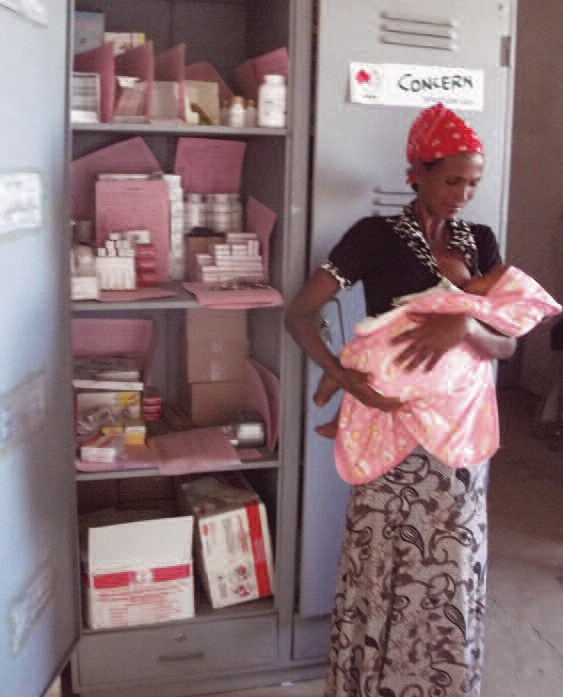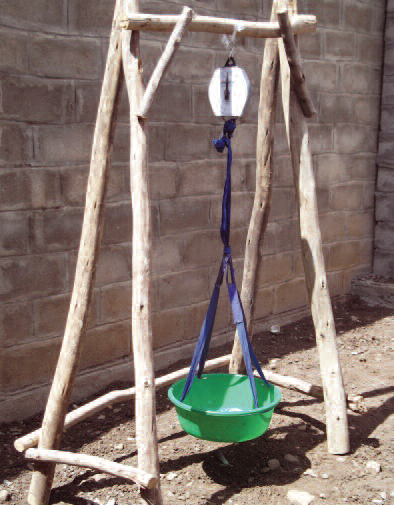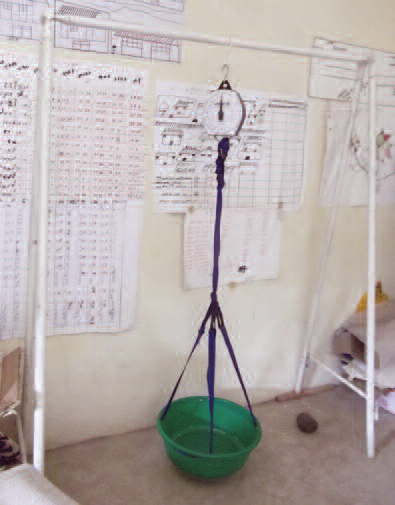Health system strengthening through material support to health posts in Ethiopia
 By Charlotte Walford, Lulseged Tolla and Pankaj Kumar
By Charlotte Walford, Lulseged Tolla and Pankaj Kumar
Charlotte Walford has been working with Concern Worldwide in Ethiopia since September 2012 supporting their CMAM and IYCF programmes. She has 15 years of field experience, mainly in Malawi and Namibia, in many aspects of nutrition, food security, HIV and the integration of nutrition with agriculture, working for NGOs and UN agencies.
Lulseged Tolla has been working with Concern Worldwide since 2011on CMAM and IYCF programmes. He supports field projects on monitoring and evaluation, operational research and other related technical aspects. He has more than 10 years’ experience in the field of public health.
Pankaj Kumar has been working in Ethiopia with Concern Worldwide since 2010. Prior to Ethiopia, he had worked in Zambia, Zimbabwe, Bangladesh, Nepal, Liberia and other African countries. He has a keen interest in agriculture and nutrition issues.
The authors would like to thank Goitom Taddesse and staff from Concern’s Mekele office in Tigray for their assistance. Asmamaw Eshete, Sinead O’Mahony and Suzanne Fuhrman are acknowledged as authors of the Rapid Assessment on Storage and Handling of RUTF in Tigray Region that prompted the material support to the health posts. Grateful thanks are also extended to the Tigray Regional Health Bureau, woreda officials and health post staff for their assistance in this initiative and, finally, to the World Bank/John Snow Development Fund for funding support.
 Location: Ethiopia
Location: Ethiopia
What we know already: CMAM treatment services are increasingly integrated into existing government health posts. This requires physical capacity to store necessary Ready to Use Therapeutic Food (RUTF) and medications supplies.
What this article adds: Concern Worldwide investigated the storage and handling of RUTF at supported health facilities in the Tigray Region of Ethiopia. Severe deficits were found in 34% of government health posts, moderate deficits in 43% and mild deficits in 23%. Actions taken were design and delivery of lockable medical cabinets to 90 health posts and delivery of portal weighing scales stands (an additional problem observed during the assessment) to 60 health posts. Recommendations include the need for national RUTF supply/storage guidance and training on supplies management.
This article describes Concern’s experience in identifying gaps in the storage and handling of Ready to Use Therapeutic Food (RUTF) in five woredas in Tigray Region of Ethiopia in 2011 and the subsequent material support provided to the health posts. Health system strengthening is a component of a larger programme which is piloting community-based management of acute malnutrition (CMAM) service delivery in 24 woredas across four zones in Tigray. In addition, optimal infant and young child feeding (IYCF) practices are promoted through posters, cooking demonstrations and counseling in seven of the woredas.
Background
Tigray Region1 is one of the most food insecure regions in Ethiopia. According to the 2011 Ethiopia Demographic and Health Survey, 9.7% of children under five years of age (U5) suffer from acute malnutrition (wasting), 28.7% are underweight and 44.4% are chronically malnourished (stunted). However, in Tigray Region, the prevalence of malnutrition is higher than the national average: 10.3% of children U5 are wasted, 35.1% are underweight and 51.4% are stunted. CMAM is an effective treatment for acute malnutrition and has, during the last few years, been scaled up across Ethiopia under a national policy of decentralisation of CMAM services to increase coverage.
Whilst a positive development, this places considerable stress on the health facilities, especially the health posts. In order to ensure the health extension workers (HEWs), who provide the preventative outreach services at the health posts, have the capacity to cope with the increased workload, non-governmental organisations (NGOs) and government health experts have increasingly been providing technical support, plus the logistical support involved in the delivery of Ready to Use Therapeutic Food (RUTF) and routine medications. However, in the initial construction of the health posts, no appropriate storage space was planned as they were intended to provide preventive outreach health activities only and not treatment. General space available for storage is severely limited.
Concern Worldwide’s programmes in Tigray Region
Since 2007, Concern Worldwide Ethiopia has been providing support to Tigray Region for the treatment of acute malnutrition through the CMAM approach, which has now been integrated into service delivery at health facilities. In August 2009, funding secured from the World Bank allowed the continuation of this intervention in five disadvantaged woredas in the region, namely Medebay Zana, Mereb Lehe, Raya Almata, Sasie Tsada Emba and Tahitay Adiyabo, until 2013. The project aims to improve access to CMAM and to promote optimal IYCF practices for children U5 to reduce morbidity and mortality related to malnutrition. In June, 2011, the project was expanded to 24 woredas.
Key activities include joint supportive supervision visits in health facilities, provision of on-the-job training to health care providers, including HEWs, and operational research studies aimed at improving the implementation of, and access to, CMAM. Simultaneously, further assessments are being conducted and the recommendations piloted in order to improve current IYCF practices.
Storage issues
RUTF is the primary product used for treating severe acute malnutrition in CMAM through the outpatient therapeutic programme (OTP). Whilst several mechanisms have been put in place to ensure that malnutrition is properly detected and treated at community level through CMAM decentralisation, RUTF storage problems at Woreda Health Offices (WoHOs) and health facilities might compromise the smooth running of OTP. RUTF management has never been assessed in any part of the country since the CMAM programme was incorporated into primary health care service delivery in 2008. At present, there are no RUTF and logistics management guidelines in Ethiopia.
Assessment
To address this information gap, a qualitative rapid assessment of storage and handling of RUTF and other OTP supplies at WoHOs and health posts in the five target woredas in Tigray was conducted during March-April, 20112. The objective was to investigate how OTP supplies are being stored and handled, identify risk factors in the storage practice and develop feasible solutions to alleviate identified problems.
Methodology
Five WoHOs and all 72 functional health posts were included in the assessment. One representative from each site was interviewed. This assessment did not include hospitals and health centres as they do not handle RUTF. Data were collected using standardised interview questionnaires administered to Maternal and Child Health (MCH) experts at WoHOs and health extension workers at health posts. To capture the physical condition of the actual storage of RUTF and OTP supplies, professional observation and documentation using digital cameras were conducted. Thematic framework analysis was used to analyse the data.
Operational definitions
Health posts were classified based on the findings as follows:
- Mild - if the facility staff needed some awareness training on supply management or some modifications in the existing storage system.
- Moderate - if the facility required maintenance in addition to minor modifications or awareness training.
- Severe - if the facility needed more than one intervention or required the provision of new materials or construction.
Results
The response rate for health posts varied between 100% (Medebay Zana) and 53.3% (Tahitay Adiyabo), with an overall response rate of 79.2%.
 Most health professionals and HEWs reported difficulties relating to the optimal storage of RUTF: it was rarely stored in a locked, self-contained cabinet or store room, as recommended for other medical supplies. The assessment found that only 42% of health posts kept RUTF in a storeroom with other medical and non-medical supplies. Of the remaining health posts, 37% stored RUTF on the floor or on a bench, 14% in either locked or unlocked cabinets, whilst 7% stored RUTF in the examination room, bags or at nearby health centres. Rats were found to be a problem in 50% of health posts and weevils in 4%. Based on the findings in individual health posts, the problem of RUTF storage and handling was assessed as ‘severe’ in 19 (34%) health posts, ‘moderate’ in 24 (43%), and ‘mild’ in 13 (23%). The major speculated causes of these problems were inadequate consideration for optimal storage during health post construction, such as absence of a store room, presence of openings or holes around the edges of windows, doors and/or under the roof and lack of provision of suitable lockable cupboards or cabinets to counter the identified deficiencies.
Most health professionals and HEWs reported difficulties relating to the optimal storage of RUTF: it was rarely stored in a locked, self-contained cabinet or store room, as recommended for other medical supplies. The assessment found that only 42% of health posts kept RUTF in a storeroom with other medical and non-medical supplies. Of the remaining health posts, 37% stored RUTF on the floor or on a bench, 14% in either locked or unlocked cabinets, whilst 7% stored RUTF in the examination room, bags or at nearby health centres. Rats were found to be a problem in 50% of health posts and weevils in 4%. Based on the findings in individual health posts, the problem of RUTF storage and handling was assessed as ‘severe’ in 19 (34%) health posts, ‘moderate’ in 24 (43%), and ‘mild’ in 13 (23%). The major speculated causes of these problems were inadequate consideration for optimal storage during health post construction, such as absence of a store room, presence of openings or holes around the edges of windows, doors and/or under the roof and lack of provision of suitable lockable cupboards or cabinets to counter the identified deficiencies.
Seventy five percent of WoHOs kept their RUTF supplies in a separate lockable store (nearby health centres) and distributed it immediately.
Recommendations
 The assessment demonstrated that RUTF storage is problematic at health post and WoHO levels and recommended that prompt action was necessary to ensure that OTP service delivery did not suffer. Each health post needed at least two or three interventions for improvement: provision of cabinets (34 health posts); maintenance of holes and openings between floor, walls and doors; creating partitions or fixing broken cabinets (24 health posts) and provision of supply management training for staff. At woreda level, early distribution of RUTF supplies to their catchment health facilities and provision of shelves were recommended.
The assessment demonstrated that RUTF storage is problematic at health post and WoHO levels and recommended that prompt action was necessary to ensure that OTP service delivery did not suffer. Each health post needed at least two or three interventions for improvement: provision of cabinets (34 health posts); maintenance of holes and openings between floor, walls and doors; creating partitions or fixing broken cabinets (24 health posts) and provision of supply management training for staff. At woreda level, early distribution of RUTF supplies to their catchment health facilities and provision of shelves were recommended.
Action: storage cabinets
In collaboration with the Tigray Regional Health Bureau (RHB), an appropriate lockable metal cabinet was designed and manufactured locally. These were delivered to 90 health posts within the five woredas identified during the assessment as lacking optimal storage conditions for RUTF and essential OTP supplies. Each cabinet cost approximately US$545, totalling US$49,050 for the 90 cabinets.
After having been in use for several months, HEWs reported no loss of RUTF due to rats or weevils and the possibility of theft has been removed. Routine medications for the OTP and other treatment programmes, in addition to the equipment and supplies for IYCF outreach, are locked and stored under cool, dust and pest free conditions as is internationally recommended.
An estimated 900 children suffering from severe acute malnutrition will benefit from the availability and safe storage of RUTF, whilst HEWs are reassured by the knowledge that OTP supplies are cleanly and safely stored.
Ordering patterns have not changed as routine monthly ordering is mandatory within the Ethiopian health system. However, as RUTF is an expensive product, the avoidance of loss due to poor storage conditions has been achieved through a simple, lasting solution that will have economic benefits for the Tigray RHB.
Additional observations
During project activities, it became evident that some health posts lacked appropriate equipment to weigh safely children U5 during growth monitoring sessions or medical examination. Crudely-made wooden stands, often with splinters and/or protruding nails, were used to hang Salter weighing scales. They are heavy, often unstable and cannot be moved easily. Occasionally, the scales are hung from the (dusty) rafters in the health post. The majority of HEWs work is outreach in their communities. They are unable to conduct regular growth monitoring outside, using a tree to support the scales, as there is usually a very cool wind blowing at the high altitudes of Tigray Region – an infant undressed for weighing will be severely chilled. Within the houses, rafters are usually unreachable or not strong enough. Health post staff requested that a stable, yet portable, hanging weighing scale stand be designed and manufactured to ensure growth monitoring can be conducted safely, both at the health post and in the community. An informal assessment was made throughout the health posts to calculate how many stable, portable hanging scale stands were required and where.
Action: Weighing scales stand
A sturdy, portable, metal stand was designed and locally made, tested for stability and practicality before mass manufacture and distribution. Sixty five health posts identified as needy in the general assessment received the stands. Cost per metal stand was US$64; US$4,160 in total. The feedback from HEWs has been enthusiastic, especially as the stand is very stable and portable, so it can easily be taken (usually on donkey back!) for growth monitoring to any village in their catchment area. The scale itself hangs more steadily, facilitating more accurate reading of the child’s weight, as it is not dangling at the end of a long rope, like a pendulum.
Conclusions and recommendations
Practical, durable solutions to enhance the effective delivery of OTP services in rural health posts also strengthens other primary health care services such as antenatal clinics and paediatric medical examinations. Requiring little or no maintenance apart from cleaning, the lockable cabinets and sturdy weighing scale stands will be in use for years to come.
Further recommendations for actions are to:
- Develop clear guidelines for RUTF handling and storage in collaboration with government and other stakeholders.
- Emphasise the importance of RUTF as a medical supply, rather than a food item.
- Provide training for HEWs to address logistic management problems.
- Supply RUTF storage facilities and other IYCF/CMAM equipment to health posts based on needs assessment.
For more information, contact: Pankaj Kumar, email: pankaj.kumar@concern.net

1Ethiopia is divided into regions, which are further divided into zones, which in turn are divided into woredas.
2Rapid Assessment on Storage and Handling of Readyto- Use Therapeutic Food (RUTF) in Tigray Region, Ethiopia. Tigray Regional Health Bureau. Dec 2011


